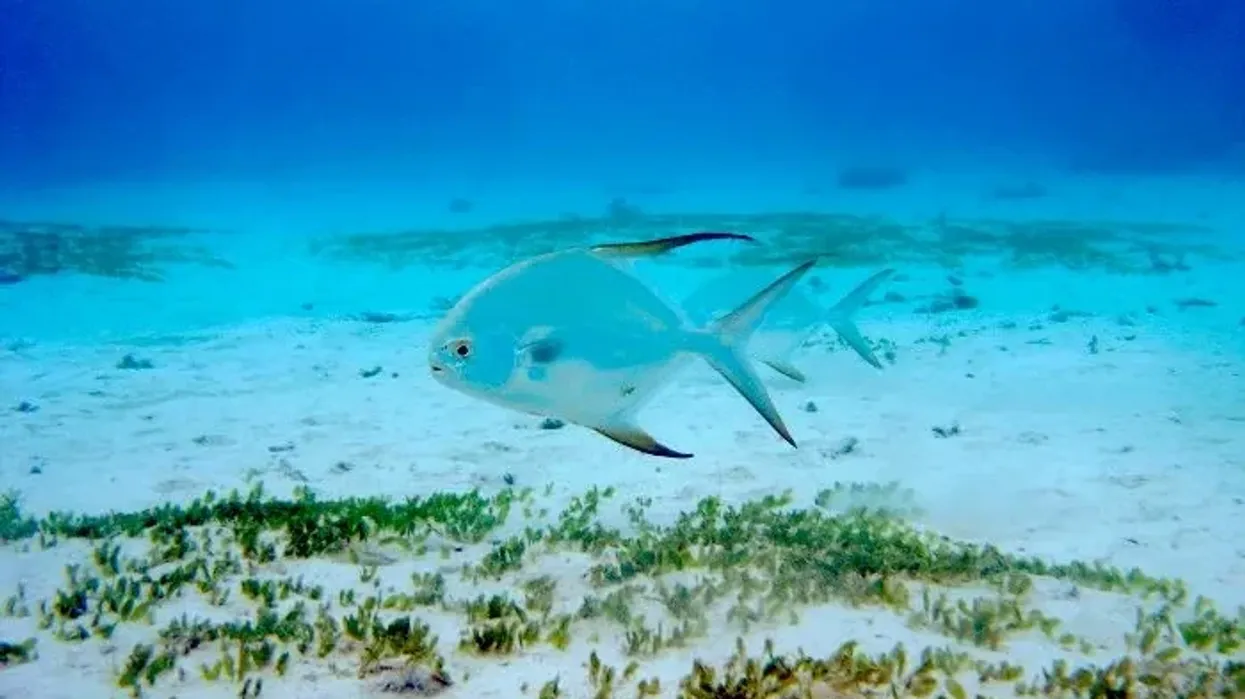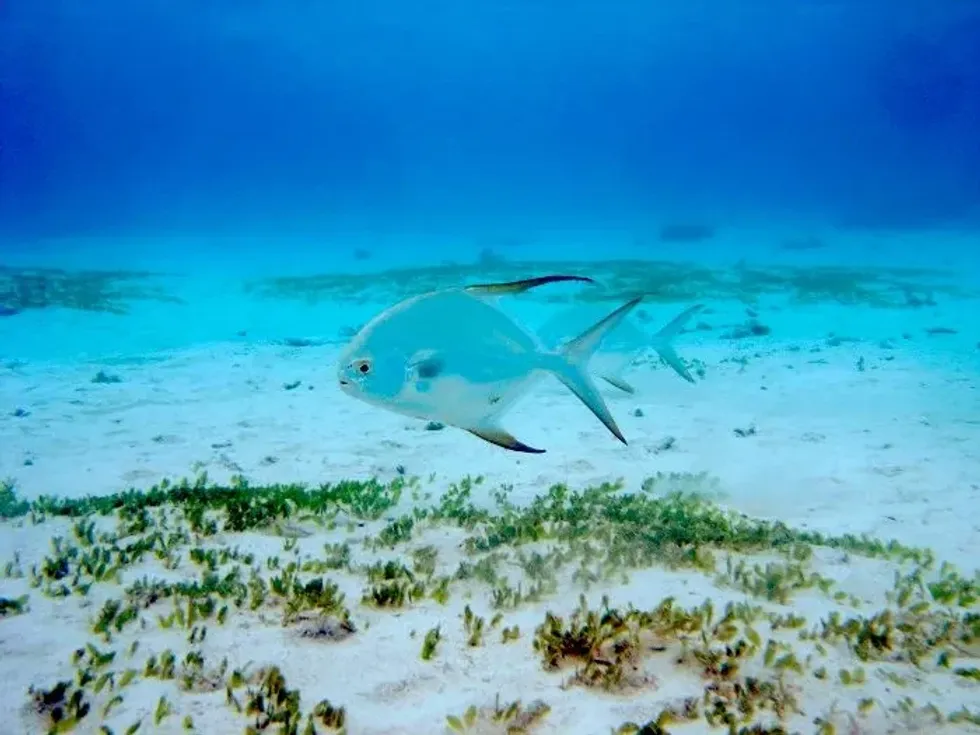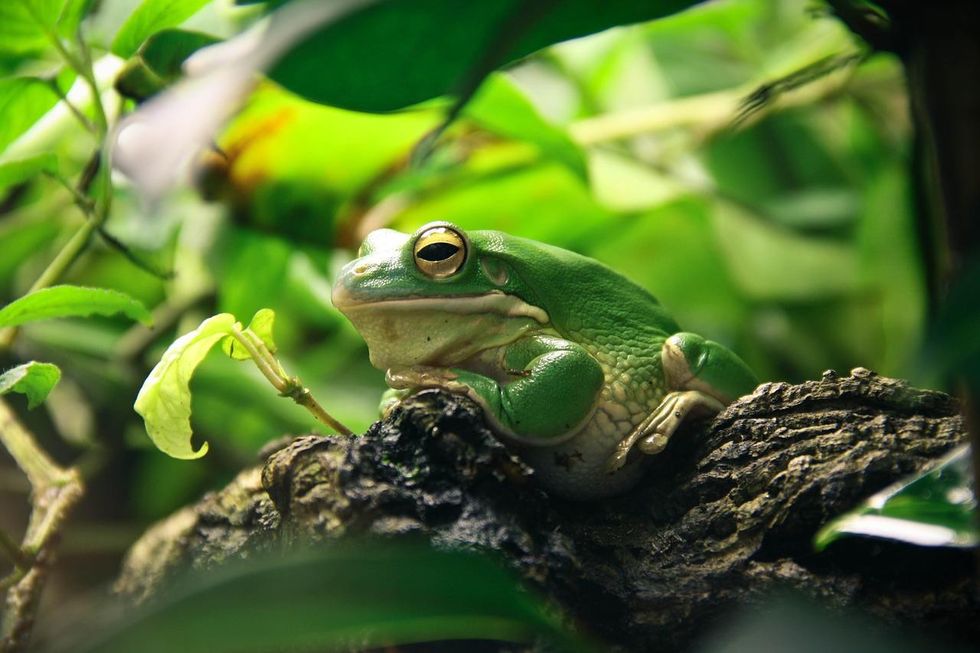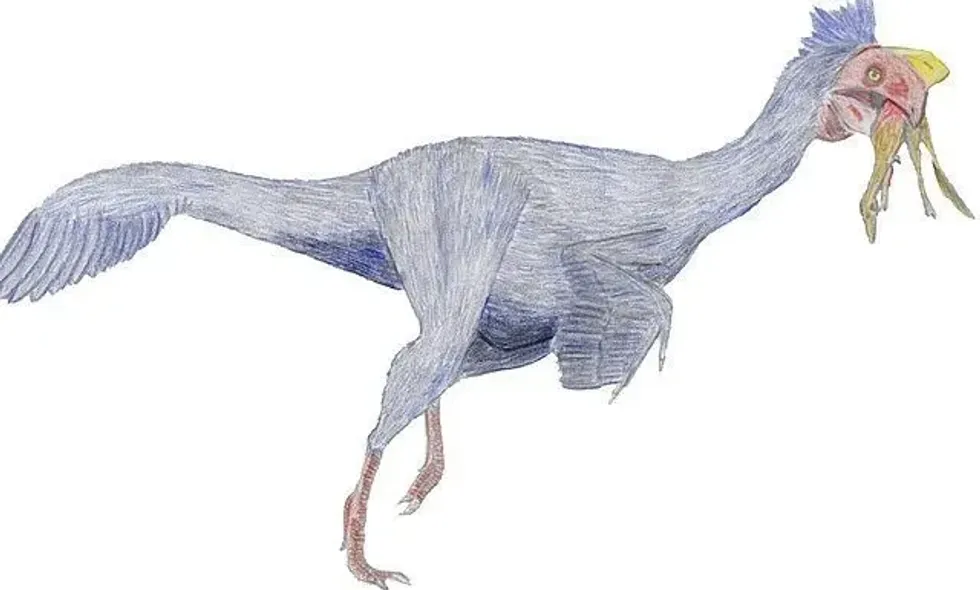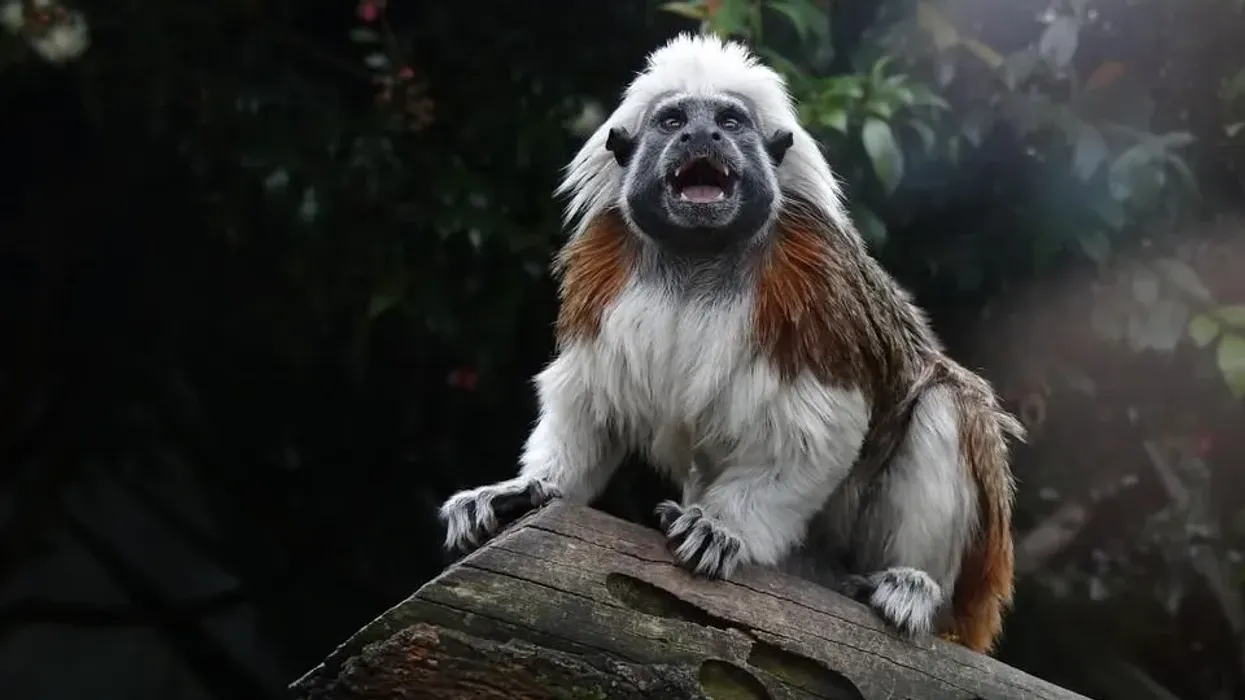The Florida pompano (Trachinotus carolinus) is a famous species of fish that is also known by the names butterfish, palmetta, and cobbler-fish. This species is touted to be one of the most delicious marine fish.
Most pompanos are found in the deep waters of the South Atlantic and the Gulf Coast of the United States.
It is a slim, deep-bodied fish with a forked tail and caudal fin and dorsal fin having a silvery-white body and head. This fish has spines and soft rays on the dorsal and anal fin.
To find out more interesting facts and information about other animals, you could also check our jellyfish and sea nettle facts.
Pompano Interesting Facts
What type of animal is a pompano?
The Florida pompano is a marine fish species belonging to the jack family. It has a compressed body with a short snout. They have a blue-greenish-silvery dorsal fin and sometimes silvery-yellowish-white on the body and head. It has spines and soft rays on the dorsal fins and anal fins.
The pompano fish is found in saline waters in the South Atlantic of the United States. This fish fast-growing and desirable for food. Florida City and Pompano beach are named after the Florida pompano fish.
What class of animal does a pompano belong to?
The Florida pompano is a fish species related to the class Actinopterygii.
How many pompanos are there in the world?
The exact number of pompanos is not known, but as their conservation status is Least Concern, it is believed that this fish's population is stable.
Where does a pompano live?
The Florida pompano is found in saline waters in the South Atlantic and the Gulf Coast of the United States and Brazil. It is also commonly found in Florida, giving this fish the name of Florida pompano.
What is a pompano's habitat?
The habitat of the Florida pompano is surf flats and saline and warm waters of the South Atlantic and the Gulf Coast of the United States. It migrates northward in the summer and southwards in the fall.
During the summertime, it can be found near Sebastian, Cape Hatteras, and the Gulf of Mexico. It is more commonly found near oil rigs, Palm Beach, and Hobe Sound during the winter. They can also be found near Virgin Island and Florida year-round.
This fish tends to stay away from clear water regions of the Bahamas. They live in the bottom as they are bottom feeders.
Who do pompanos live with?
The pompano lives in groups known as schools. They generally spend time together swimming and searching at the bottom of the sea for prey. Multiple schools of fish come together in large numbers during the breeding season to spawn.
How long does a pompano live?
The Florida pompano usually survives for only about three to four years, although individuals as old as six to seven years have also been caught.
How do they reproduce?
The male pompano reaches sexual maturity at one year of age, whereas females reach sexual maturity at two years old. During spawning, the female releases eggs and the male fertilizes them outside of the body. Spawning is considered to occur offshore where the current will carry the young back to the shore.
The peak of their spawning happens in spring. Young pompanos first appear on Florida beaches in April or May. After a six-week growing period, they migrate northward.
What is their conservation status?
The conservation status of the pompano is of Least Concern as they are found in abundance and are also harvested through aquaculture.
Pompano Fun Facts
What do pompanos look like?
The Florida pompano (Trachinotus carolinus) belongs to the jack family found in the Atlantic. This fish is related to the permit. It has a deeply forked tail and has a blue-greenish body with silvery-yellowish on the throat, belly, and pelvic and anal fins.
The dorsal fin in the front is low with about six separate spines. The spines may be reabsorbed in a large fish. The second lobes on the dorsal fin and anal fins have a lower anterior. It has spines and soft rays on the dorsal fin and anal fin.
There are about 20-24 anal fin rays. It is a compressed fish with a deep and blunt snout. These fish have very short teeth.
How cute are they?
Many people don't think that the pompano looks great, but if you consider them as colorful-bodied creatures, they are pretty cute.
How do they communicate?
It is not known how the pompano communicates. They are thought to communicate just like other fishes by gestures and motions.
How big is a pompano?
A young pompano grows around 0.8-1.9 in (20.3-48.2 mm) in length per month, depending on its population. A pompano grows quickly and attains a length of around 12 in (30.4 cm) in length. The largest pompano was recorded to be 23-25 in (58.4-63.5 cm) long. It is about three times larger than a clownfish.
How fast can a pompano swim?
They have a pretty normal speed which is fast enough to escape larger predators, just like other fishes.
How much does a pompano weigh?
The Florida pompano weighs around 1 lb (0.45 kg) after the first year. On average, it weighs approximately 3 lb (1.36 kg), though the largest pompano is recorded to have weighed around 8-9 lb (3.6-4 kg).
What are the male and female names of the species?
Pompano fishes are distinguished as male and female pompano fish. They do not have any specified names.
What would you call a baby pompano?
Baby fishes are called pompano fish spawns or juvenile pompanos.
What do they eat?
The Florida pompano belongs to the family of Carangidae, who are bottom feeders. They stay at the bottom of the sea to find food such as worms and tadpoles. They have very short teeth and eat zoobenthos and small clams as food.
Are they eaten by humans?
Yes, the Florida pompano is a popular fish among chefs because the fillets are nice and thick and it has oily flesh that shines white and is opaque. With its simple structure of very few bones, the pompano is an easier fish to eat than most other popular pan fish.
This healthy fish with its rich diet yields a rich flavor to taste as they are almost always wild-caught. They are a very important part of recreational and commercial fishing.
Would they make a good pet?
Pompanos are not really considered as pets as their meat is always in demand and they work better as food or for fishing. Also, they like to live in large groups which we could not replicate in a tank.
Did you know...
The fishing mortality of the Florida pompano rate increased sharply from 1997-2000. Nevertheless, an extensive study by the Florida Fish and Wildlife Conservation Commission concluded in 2005 that the fishing of the Florida pompano was sustainable and can be practiced as the population is healthy.
There are various pompano dishes such as fried pompano and grilled pompano. You can cook it however you feel like and it absorbs flavor well.
What are the different types of pompano fish?
The Florida pompano is one of the three species of the Trachinotus family. There is the Pacific pompano and the California pompano. The close relatives include the pomfret, golden pompano, Paloma pompano, and African pompano.
Where can you catch a pompano fish?
Fishing of the Florida pompano is very common in all states. Harvesting is also done along the west coast of Florida and the eastern coast, as well as Indian Rivers.
Here at Kidadl, we have carefully created lots of interesting family-friendly animal facts for everyone to discover! For more relatable content, check out these milkfish facts and monkfish facts for kids.
You can even occupy yourself at home by coloring in one of our free printable Pompano coloring pages.

